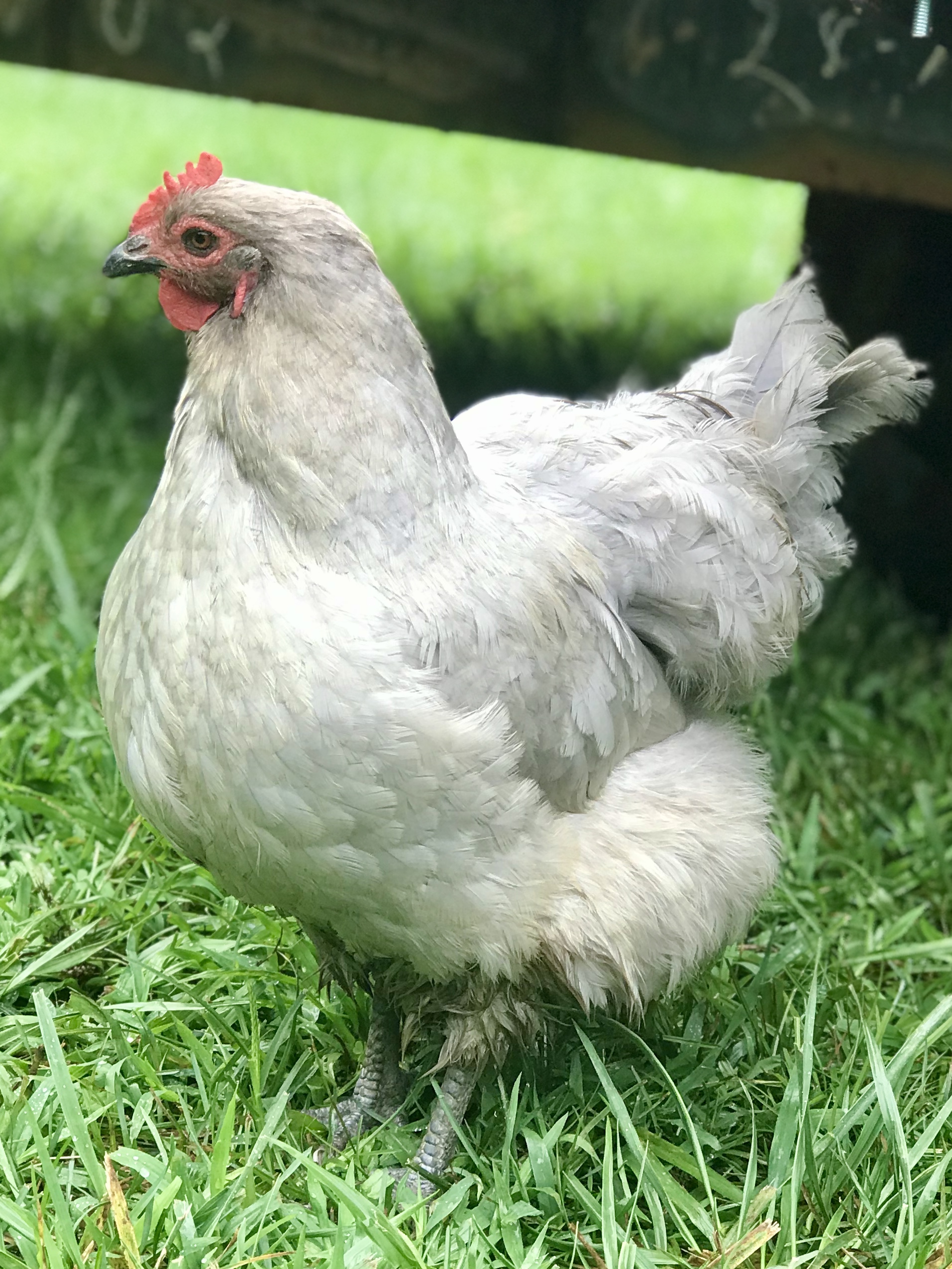Oh my goodness, what happened to all your feathers?

Backyard chickens will go through several molts in their lifetime. Young chicks go through several molts until their beautiful adult feathers come shining through. Starting again around 18 months and then every year before the start of Fall. They can have a softer milder molt in the Springtime. I do have a few that drop feathers twice a year. But the Fall molt is always the hardest. A typical molt can take up to 16 weeks to regrow all those beautiful feathers. For roosters with long tail feathers, like Mr. Jangles, it could take 6 months. All of this is in preparation for the cold winter months.
Wilma going into her molt!

As I'm writing this article Wilma is molting. She's 6.5 years old and she's really struggling with her health. A hard molt is very draining, painful, and requires a lot of energy. I did end up making an appointment with her veterinarian. She's currently not wanting to eat or drink. Her appointment went well. No obvious signs of disease, infection, lice, mites, or other parasites. I'll continue with home care and if needed I'll take her back in for further testing. This isn't the first time Wilma has struggled during a hard molt. The last time this happened she didn't lay another egg for a whole year. Then one day I found her snuggled up in the nesting box and out she came a proud egg layer! So, what am I doing to help Wilma with supportive care?
1. Extra Protein. I've switched her Purina Layena layer feed to Purina Flock Raiser. She's not really eating a whole lot. I'm including some of her favorite treats to help stimulate her appetite. Grubs, little pieces of cooked meat, scrambled eggs, and tuna.
2. I've separated her in my ICU chicken room, Don't be fooled, its not that fancy. It's just my She-shed. That happens to be under construction. But its peaceful and has air condition. We want to minimize stress levels. Honestly, I'm probably going to make a place for her in my maternity ward. That way she can still see her sisters but be safe from any bullying. Chickens are flock animals and prefer to be in a group. But we know Wilma's sassy self can be independent!
3. Adding nutritional supplements. I'm a huge fan of Poultry Cell and Nutri-Drench. A sick bird is not foraging and eating as they should. To help fill in the nutritional gaps I like to add a dose of one of these supplements. I just follow the dosing directions on the bottle and give by syringe. You want to be careful and not cause your bird to aspirate.

Mr. Jangles lost nearly all his long tail feathers. We made a joke on our IG page and named that lone feather, Rose. Rose wouldn't let go! We've several videos on our page about that clingy feather!
Things we avoid during a molt!
1. Extra handling or snuggles. Outside of doing a hands on check up or providing supplements I don't snuggle them or pick them up. Pen feathers are tender, can bleed if broken, and your bird is just tired.
2. Adding a flock member to an existing flock. The stress of trying to intergrade other birds can increase their stress level during a very vulnerable time. Our goal is to limit and changes. Keeping a close eye for any type of bullying. Feathers are 80 percent protein and if its not provided, a flock can potentially start feather picking. Making certain to rake up any of the fallen feathers. This will reduce the chance of one of your birds eating it and causing a crop issue.
3. I will limit my roosters access or free time with a hen that is in a hard molt. Blood feathers or pen feathers can break during treading and this can lead to a serious loss of blood.
Webbles going through a hard molt and covered in pen feathers.

These are things that we incorporate into our flock to help ease the pain and discomfort of molting. We always encourage you to find what works best for your flock!
Mr. Jangles looking bald last year.

Much love, Mel and The Holler Gang Heifers
